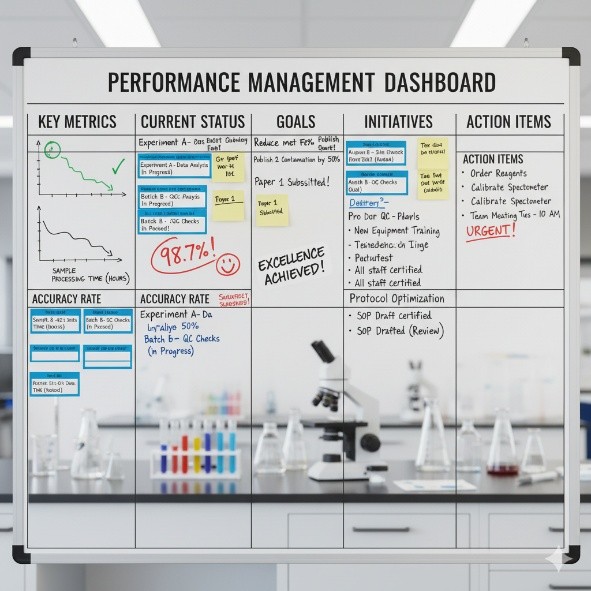Driving Excellence in Laboratories Through Performance Management

In today’s rapidly evolving TIC landscape, performance management in laboratories is no longer optional, it is essential. With rising demands for accuracy, efficiency, and compliance, laboratories must implement structured performance frameworks to deliver consistent, high-quality results.
Effective performance management
Effective performance management starts with clear objectives and measurable metrics. This can include lead times, error rates, quality control compliance, and customer and staff satisfaction. By aligning individual and team goals with organizational strategy, laboratories can ensure that every effort contributes to broader business and scientific outcomes.
Aspects to consider
There are various key aspects to consider when rolling out a structured performance management framework. These include:
- Linked and cascaded metrics: Metrics used to measure team and individual performance must be linked to the overall strategy of the company. The metrics must also be cascaded to the relevant level of the team so the team are empowered to make decision and take actions that can influence to metric.
- Data-driven monitoring: Performance indicators should be tracked in a timeframe consistent with the effect of the metric.
- Communication and feedback: Foster a culture of open dialogue to address challenges proactively.
- Taking action: Empower teams to implement to required corrective and preventative actions to not only correct any deviations but also improve future performance.
- Workload management: Equipping staff anticipate and allocate resources more efficiently.
- Competency development: Invest in continuous training and skill assessments.
- Compliance and quality assurance: Align processes with regulatory standards and best practices.
Resistance to performance management is natural, often stemming from concerns about surveillance or increased workload. Overcoming this requires transparency and collaboration. Leaders should emphasize that performance systems are designed to support growth, not penalize. Involving staff in defining performance indicators and providing regular recognition can help shift perceptions from oversight to empowerment.
Conclusion
Ultimately, performance management is not just about measurement, it’s about creating an environment of accountability, learning, and continuous improvement. Laboratories that embrace it will not only meet today’s demands but also position themselves as leaders of innovation and trust in the future.

